Sunspots, they’re such an enigma. They’re huge right now. Everyone wants to see them in their photos, but they don’t want to have them on their wall…unless you do it right.
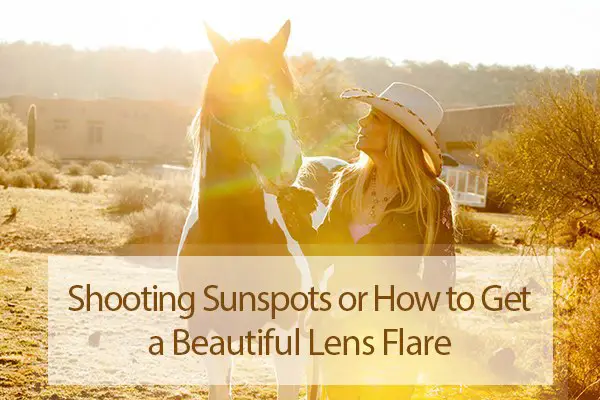
When I first started in photography, 20 years ago, there were Big Taboos, the Uncrossable Chasms that one never even considered crossing; Never use a flash on camera, keep those newborn babies AWAKE, or better yet, don’t even shoot them until they can sit up on their own, and NEVER, absolutely NEVER let “Lens Flare”, also known as Sun Spots, cross your lens.
Breaking the Rules
I was a rule breaker by nature, so I used a flash camera, so that I could turn my subjects away from the sun so that they could look at me with a natural expression, and not squinting their eyes into the sun. Writing this article brought up a very weird memory for me. I had just moved into a new town, and this woman on my street pretended to be my friend and take an interest in this “new and cool” way of shooting and she asked me all about how to shoot with my model’s backs to the sun.
So I told her everything I knew, and as a thank you gift, stole one of my wedding clients, shot their wedding for a tenth of my price, and somehow managed to get a sun spot directly on the bride’s face on each and every shot, which she then showed me and begged me to fix.
This was in the day of film, so, unless she went to a really good retoucher, she wasn’t going to get any results worth printing, so then the bride came crawling back to me, asking me to recreate the wedding, which I did, and that woman from my block, to her credit, actually paid for, and we got beautiful , glorious pictures, and the witch on my street went back to being a pretentious little housewife. So I was kind of scared of sunspots for quite a while, which is ridiculous, since you can SEE the sunspot in your viewfinder when you are taking the picture.
It looks like a kind of filmy stretch across your field of vision, the people in front of your aren’t crisp anymore, and it hurts your eyes, because that ” film” is the sun, low in the sky, going directly into your lens. It shouldn’t be there unless you want it there or unless you put it there knowingly and plan to just pop it out with your clone stamp in Photoshop.
Sunspots for Beauty vs. Sunspots that Just Appear
First I’m going to show you what a “not ready for Primetime” sunspot looks like. In this shot, I was shooting the absolutely beautiful Hicklin family’s Family Reunion. They had a huge crew with them, and wanted a ton of pictures of each small family’s individual group, as well as the whole family and individual pictures of each child, of which there were about ten under age ten, and each parent with each kid, as well as the grandparents with both their original kids and all of the grandchildren. So it was a huge shoot.
I normally start shooting two hours before sunset, so that I can get the beautiful light, but also allow for low ISO and high fstop in placing family members, which is great for the large prints that I am known for, as well as excellent depth of field, but with five individual families, I started three hours early. Lisa’s hubby had to get grilling the steaks, so I started with their individual family.
The sun here was directly behind them, making a beautiful back light, but it was high, higher than the trees, and it just filtered in and made a weird, unnatural bright green circle above the mom’s and dad’s heads that didn’t do a whole heck of a lot for anyone, and a yellowish brown spot by their feet that just looked like dead grass.
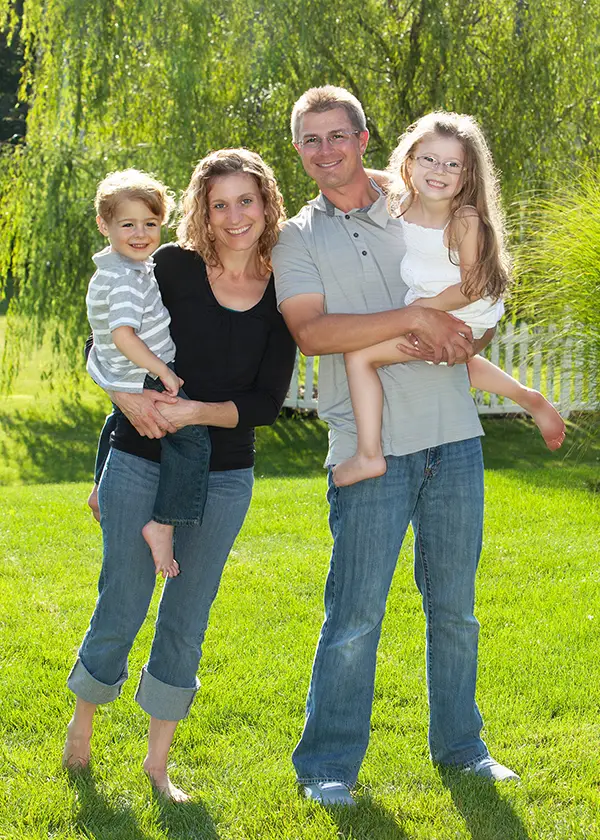
The sunspots weren’t hurting anyone, but they weren’t adding to the picture, either, so you wouldn’t keep those kinds of sunspots, so since the image was still great, I just cropped in where I wanted it and removed the spots with a cloning stamp in Photoshop.
Making the Sunspot
Making a sunspot with purpose requires a hurry up and wait mentality. You also have to make sure to see the haze in your lens, make sure that your model is in focus and just force yourself not to look directly into the sun for any amount of time, lest your eyes feel the ill effects of the sun. So just wait for the sun to get low. Like directly behind your subject’s body, or in this case, above the dip in the mountain type low. Focus on the subject, hold the focus button down, move a tiny bit to the side to let the sun show through, in the form of haze. And then, without taking your finger off the focus button, shoot. I think of a successful sunspot shot as when your subject is clearly defined. Then you can play with the colors and saturation to your liking. Sometimes you don’t get spots, you just get haze, and that’s really beautiful too…it provides an ethereal look to your shot that you can’t get any other way.
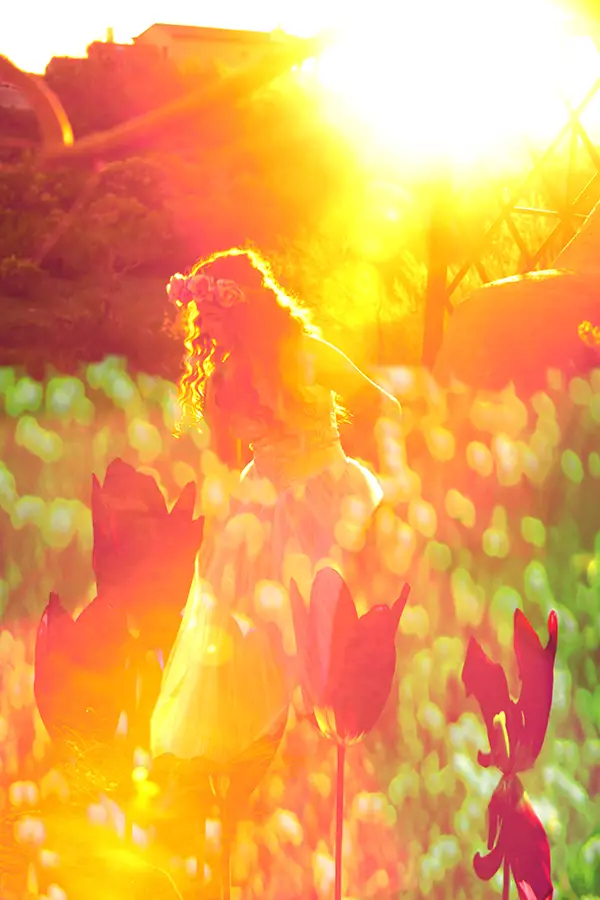
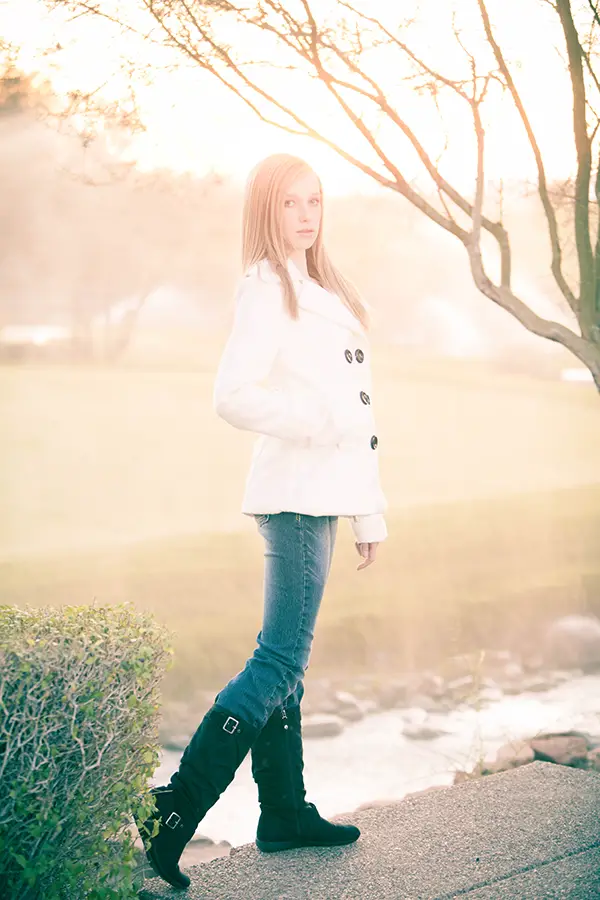
This sun spot is actually huge, encompassing the top of the picture to her collar, but the line of demarcation is diffused because the sun was under a very light cloud cover. You can’t make sunspots if your model’s body doesn’t make a shadow, but even if there is a very faint shadow, as you can see, under her boots, there is still very beautiful sunspot potential.
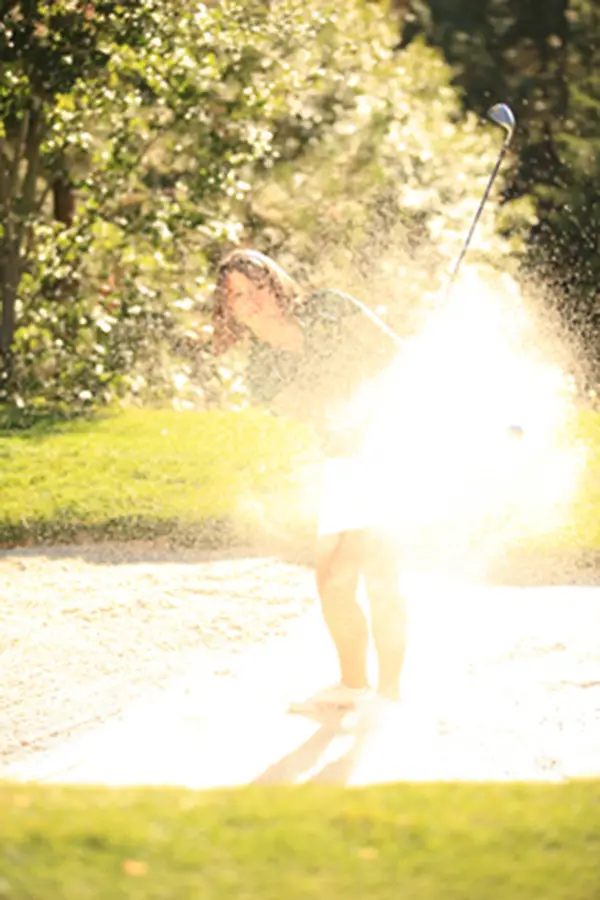
This golf shot is a tricky one because you’re catching the motion, the expression, and the spot. Make sure that your shutter speed is at least at 1/250th of a second, then wait for the sun to get low enough, focus on the model, then with the focusing button still held down, shift to the side so that the sun pokes out from behind the model. Have her swing back and let go hard and fast like she normally would. Click the shutter four or five times starting just before she touches the ball with her club, use a long lens, so that the sand doesn’t get in your lens, and the sand will go right into the sunspot like magic. The sunspot got really close to her face, but avoided it, so you can see her clearly through the sand.
Send me your sunspot pictures, both as you envisioned and your fails, to [email protected] and we will work them out to be sun Masterspoters!!










Wonderful articles and photos Barbara!
Thank you so much, Tim!! I really appreciate you taking the time to write this!!
My pleasure! Fantastic work 🙂
Stunning photos ! Nice work man.
love the pictures! you have a beautiful family!